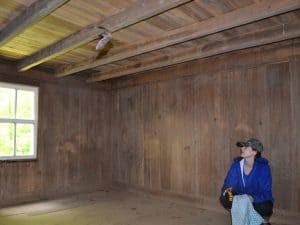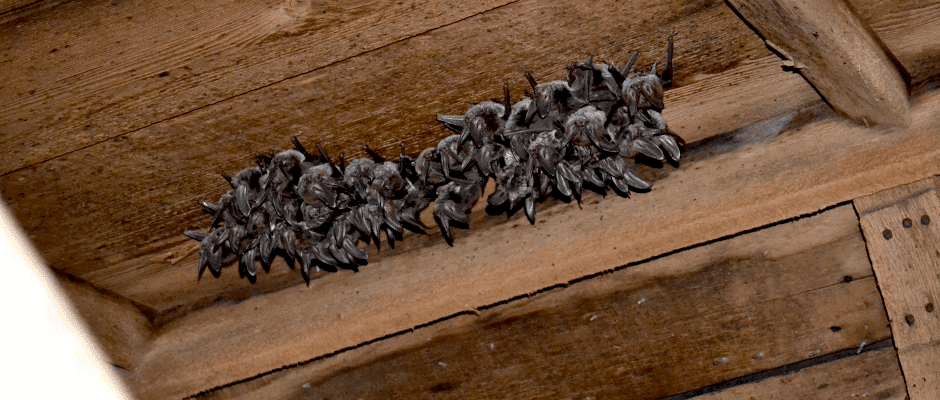Share this article
JWM: Bats choose old and dark buildings
When you think about bats, you may imagine them roosting in the sort of dark, dingy quarters where they often appear in movies and television shows. New research shows you might not be too far off.
In a new study published in the Journal of Wildlife Management, researchers looked at the types of buildings that bats roost in within Great Smoky Mountains National Park in eastern Tennessee and western North Carolina. They hoped to inform management decisions regarding bats, which can be a challenge in the park. Bats face conservation concerns, but they can also transmit diseases such as rabies.

Rafinesque’s big-eared bats roost in a historic building in Great Smoky Mountains National Park. ©Mackenzie Younger
“The National Park Service was obligated to protect national resources and bats roosting on buildings as well as people who are patrons to the park,” said Kirstin Fagan, the lead author of the study, which was part of her master’s research at the University of Tennessee. The team also hoped to identify which buildings to look at when the Park Service performs bat surveys.
Fagan and her colleagues surveyed 140 buildings in the park in 2015 and 2016 and identified 48 roost sites for species such as the eastern small-footed bat (Myotis leibii) and the Rafinesque’s big-eared bat (Corynorhinus rafinesquii). Then they recorded microclimate conditions, building features and habitat characteristics of both buildings that were used by bats and those that weren’t.
At each site, Fagan and her colleagues used handheld acoustic detectors, checking for bats inside and outside each floor. They also collected guano — sometimes from piles up to Fagan’s knees — to extract DNA and determine what species were present.
After putting the data together, Fagan and her team found a few important variables in buildings with bats. Older buildings, buildings with less light and those in areas with lower road density all seemed to be more likely to have bats.
“It’s really logical, but it’s still really important because it enables the National Park Service to make decisions in the Smokies,” she said. “Getting it on paper is really important.”
Fagan hopes these results inform survey efforts moving forward. “The National Park Service has limited resources,” she said. “If you have seasonal technicians, you can send them out to look for bats and these are the buildings we want to focus on.”
Header Image: Kirstin Fagan stands in a historic building in Great Smoky Mountains National Park with an eastern small ©Mackenzie Younger








